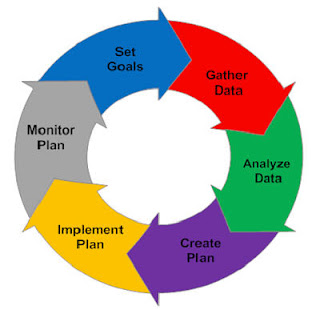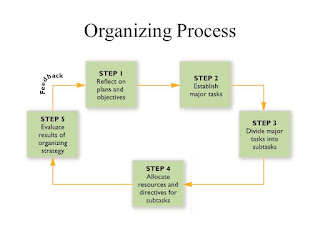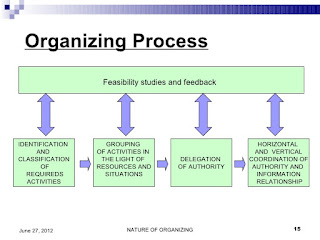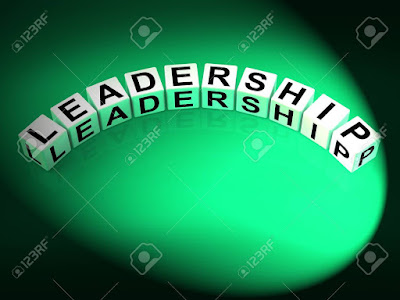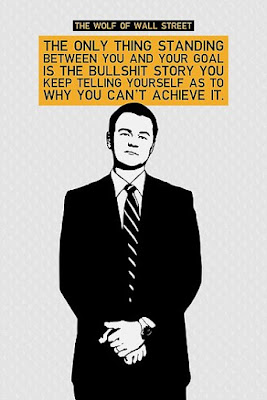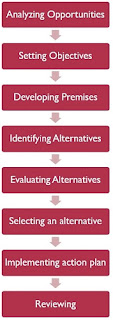The definition of planning is the process of making plans for something.In the simple term is if we want to achieve something like we want to arrived to a destination, we need a good plan.For example,we are planning to arrived at Kedah before sunset from melaka.So we need to plan on what time we need depart from our destination.
Scene 1:
Ali and Ahmad want to going back to their hometown in Kedah by car.They decided to ask another person to join them,so that they can share the money on the tol and fuel.
Ahmad as the driver should plan what time they depart and also what time he should rest and take their meal.He should plan well so that they can save their fuel and arrived the destination before sunset.So he should decided on what route they should follow to achieved their goals which save fuel and arrived their hometown before sunset.
The conclusion is we need a plan to achieved our goals efficiently and effectively.There are also alternative plan if our main plan do not work properly
Sunday, January 27, 2019
Thursday, January 24, 2019
STAFFING
STAFFING IN MANAGEMENT
Staffing is defined as,"filling and keeping filled,position in the organizational structure.This is done by identifying work-force requirements,inventorying the people available,recruiting,selecting,placing,promoting,appraising ,planning the careers,compensating,training,developing existing staff or new recruit,so that they can accomplish their tasks effectively and efficiently.
Staffing is defined as,"filling and keeping filled,position in the organizational structure.This is done by identifying work-force requirements,inventorying the people available,recruiting,selecting,placing,promoting,appraising ,planning the careers,compensating,training,developing existing staff or new recruit,so that they can accomplish their tasks effectively and efficiently.
IMPORTANCE OF STAFFING
The staffing function is a very important function of the management due to the following reasons.
- staffing helps in discovering and obtaining competent personnel for various jobs.
- It helps in the optimum utilization of the human resources
- It helps in developing professionals in every field of organizational activity.
- It helps to improve the quantity and quality of the output by putting the right person on the right job.
- It facilitates growth and diversification activities in the organization.
- It reduces the cost of manpower by eliminating the wastage of the human resources
- It helps to improve job satisfaction of the employees and hence thier morale
source:https://www.google.com/search? q=staffing&source=lnms&tbm=isch&sa=X&ved=0ahUKEwiy_9PcgojgAhVSknAKHQMABhEQ_AUIDigB&biw=1920&bih=969
ORGANIZING IN MANAGEMENT PROCESS
The Organizing Process
The term organizing process refers to the work of determining how to best arrange and utilize your resources in order to achieve the desired results. Let's break down those terms a bit further what to do when we use the terms arrange and utilize? This could be as simple as arranging your pens neatly next to your notepads on your desk,and on a larger scale it means almost the same thing, putting things where they need to be in order to be used effectively. You can't use your pen if it's not on your desk, and you can't deliver cakes to a customer's business if your only driver is in the kitchen mixing the batter.
https://www.google.com/search?q=management+process+organizing&hl=en&prmd=inv&source=lnms&tbm=isch&sa=X&ved=0ahUKEwist56834fgAhVRinAKHZAlA6gQ_AUIESgB&cshid=1548379368394&biw=360&bih=566#imgrc=DWyDnCie98FQrM
It involves designing, structuring, and coordinating the work components to achieve organizational goal. It is the process of determining what tasks are to be grouped, who reports to whom, and where decisions are to be made. A key issue in accomplishing the goals identified in the planning process is structuring the work of the organization. Organizations are group of people, with ideas and resources, working toward common goals. The purpose of the organizing function is to make the best use of the organization's resources to achieve organizational goals.
https://www.google.com/search?q=management+process+organizing&hl=en&prmd=inv&source=lnms&tbm=isch&sa=X&ved=0ahUKEwist56834fgAhVRinAKHZAlA6gQ_AUIESgB&cshid=1548379368394&biw=360&bih=566#imgrc=wr8LKMOM5HLvaM
Steps in the organizing process
1-Review plans.
2-List all tasks to be accomplished.
3-Divide tasks into groups one person can accomplish job.
4-Group related jobs together in a logical and efficient manner.
5-Assign work to individuals.
https://www.google.com/search?q=steps+in+organizing+process&tbm=isch&ved=2ahUKEwjgsr7U4ofgAhVSIHIKHQkEDisQ2-cCegQIABAC&oq=steps+in++organizing&gs_l=mobile-gws-wiz-img.1.2.0l3j0i30.778257.781132..783544...0.0..0.185.3176.8j19....3..0....1.........0i67j0i7i30j0i7i10i30j0i8i7i30j0i8i30j0i13.4G6OSfU19OE&ei=7WRKXKCIOdLAyAOJiLjYAg&bih=566&biw=360&prmd=inv&hl=en#imgrc=fFrvJ8elKp9_RM
https://www.google.com/search?q=steps+in+organizing+process&tbm=isch&ved=2ahUKEwjgsr7U4ofgAhVSIHIKHQkEDisQ2-cCegQIABAC&oq=steps+in++organizing&gs_l=mobile-gws-wiz-img.1.2.0l3j0i30.778257.781132..783544...0.0..0.185.3176.8j19....3..0....1.........0i67j0i7i30j0i7i10i30j0i8i7i30j0i8i30j0i13.4G6OSfU19OE&ei=7WRKXKCIOdLAyAOJiLjYAg&bih=566&biw=360&prmd=inv&hl=en#imgrc=drIS4OoDeAD3UM
Resources
https://study.com/academy/lesson/organizing-process-in-management-steps-lesson-quiz.html
http://artaddict2007.blogspot.com/2012/02/organizing-management-process.html?m=1
The term organizing process refers to the work of determining how to best arrange and utilize your resources in order to achieve the desired results. Let's break down those terms a bit further what to do when we use the terms arrange and utilize? This could be as simple as arranging your pens neatly next to your notepads on your desk,and on a larger scale it means almost the same thing, putting things where they need to be in order to be used effectively. You can't use your pen if it's not on your desk, and you can't deliver cakes to a customer's business if your only driver is in the kitchen mixing the batter.
Steps in the organizing process
1-Review plans.
2-List all tasks to be accomplished.
3-Divide tasks into groups one person can accomplish job.
4-Group related jobs together in a logical and efficient manner.
5-Assign work to individuals.
https://www.google.com/search?q=steps+in+organizing+process&tbm=isch&ved=2ahUKEwjgsr7U4ofgAhVSIHIKHQkEDisQ2-cCegQIABAC&oq=steps+in++organizing&gs_l=mobile-gws-wiz-img.1.2.0l3j0i30.778257.781132..783544...0.0..0.185.3176.8j19....3..0....1.........0i67j0i7i30j0i7i10i30j0i8i7i30j0i8i30j0i13.4G6OSfU19OE&ei=7WRKXKCIOdLAyAOJiLjYAg&bih=566&biw=360&prmd=inv&hl=en#imgrc=fFrvJ8elKp9_RM
Resources
https://study.com/academy/lesson/organizing-process-in-management-steps-lesson-quiz.html
http://artaddict2007.blogspot.com/2012/02/organizing-management-process.html?m=1
Sunday, January 20, 2019
THE IMPORTANCE OF MANAGEMENT INFLUENCE
Management actions are very important. If a company or organisation is in financial difficulty, then cost cutting may be inevitable. The way management tackles the problem determines the long-term outcome. Cost reduction that destroys morale will only have a short-term advantage if the organisational fabric is destroyed in the process.
Senior management have a major influence. The chief executive is a key appointment. His or her leadership is critical. The senior management team sets not only a direction but also "the tone" of how things are done.
In times of difficulty, it is important to work with staff. A positive culture, where people are working hard to overcome difficulties, is like a turbocharger.
On the other hand, forced change on an unwilling staff is like a big discharge of water into a desert - the sand quickly absorbs the life giving water. The same with poorly executed change. If management have not raised support, if they have not provided good leadership, then the energy is wasted.
If organisations lose their focus on service, they eventually suffer. If management influence is negative, rather than positive, staff morale and the organisation climate suffers. In summary, management must back up their statements with positive actions. Their behavior has to help rather than hinder. It has to be concrete, real and positive.
Influence is about finding common ground with others and building strategic alliances or partnerships. In a study conducted by the Harvard Business Review, people engaged in successful alliances believe that:
- Collaboration is competition in another form
- Harmony is not the most important measure of success
- Cooperation has its limits, and companies must defend against competitive compromise
- Learning from partners is paramount
In other words, your colleagues can be both your competitors and collaborators toward mutual goals. The skillful manager understands this dilemma and can negotiate through it when necessary.
Learning how to influence others and how to be influenced by others isn’t rocket science; it’s people science. You negotiate the corporate landscape and its inhabitants much the way the early pioneers did on their journeys west. With some individuals, you establish relationships for mutual benefit; with others, you trade or exchange items that have a value to each of the parties involved; and with a few, you keep your distance and only engage them when you really have to. (Remember: harmony is not necessarily a sign of success.) True influence is being a catalyst for the success of others without any expectation of payback.
INFLUENCE AND LEADERSHIP
There can be no leadership without influence, because influencing is how leaders lead. In their classic book on leadership, Leaders: Strategies for Taking Charge, Warren Bennis and Burt Nanus echo this point: "There is a profound difference between management and leadership," they wrote, "and both are important. 'To manage' means 'to bring about, to accomplish, to have charge of or responsibility for, to conduct.' 'Leading' is 'influencing, guiding in direction, course, action, opinion.'" They add that "an essential factor in leadership is the capacity to influence."
 |
| https://goo.gl/images/xEhe7z |
Managers also use influence, of course, because only a fraction of managerial work can actually be accomplished through control and the use of authority. The aim of both managers and leaders is to accomplish an organization's goals. Managers do it trough plan organization, processes, task assignments, measurements, and so on, but they must also direct people and manage their performance, and you can't manage people solely through command-and-control methods. People are human beings, not machines, mechanical parts, or assembly lines. They respond best when they are treated like human beings, they work best when they have a voice in how the work is done, and they remain loyal and engaged when they feel respected, trusted, well informed, and cared for. That's why the best managers also lead, and they lead through the social and emotional approaches to influencing, not just the rational approaches.
 |
| https://goo.gl/images/k8nLG2 |
Leaders lead by mobilizing people around a compelling vision of the future, by inspiring them to follow in the leader's footsteps. They show people what's possible and motivate them to make those possibilities real. They energize and focus people in ways that fulfill their dreams, give them a sense of purpose, and leave them with a profound sense of accomplishment when the work is done. Leaders lead by modeling ways of thinking or acting and by encouraging new ways of looking at situations, and by so doing they give people the words and the courage to make those new ways their own. The best leaders are teachers, mentors, and role models--and they accomplish the vast majority of their work through influence, not authority.
 |
| https://goo.gl/images/tACmZ3 |
In many cases, leaders and managers are one in the same. The division vice president who leads a team of people to accomplish what they might not have thought possible is also a manager. The manager who oversees a team's task performance but also looks after the team members' career planning and coaches them on developing their skills is also a leader. The art of management and leadership is to know when to act as a manager and when to act as a leader, when to use authority and when to use influence, when to ask and when to tell, when to take over and when to let go. In every case, it is crucial for leaders and managers to understand the range of influence techniques they can use, know when and how to use them, build their power bases so that they have the capacity to be influential, and sharpen their skills so that they can influence people effectively.
Basic Elements of Organizing
Designing Jobs:
Job design is the determination of an individual’s work-related responsibilities. The most common form is job specialization. Because of various drawbacks to job specialization, managers have experimented with job rotation, job enlargement, job enrichment, the job characteristics approach, and work teams as alternatives.


Grouping Jobs:
After jobs are designed, they are grouped into departments. The most common bases for departmentalization are function, product, customer, and location. Each has its own unique advantages and disadvantages. Large organizations employ multiple bases of departmentalization at different levels.

Establishing Reporting Relationships:
Establishing reporting relationships starts with clarifying the chain of command. The span of management partially dictates whether the organization is relatively tall or flat. In recent years there has been a trend toward flatter organizations. Several situational factors influence the ideal span.

Distributing Authority:
Distributing authority starts with delegation. Delegation is the process by which the manager assigns a portion of his or her total workload to others. Systematic delegation throughout the organization is decentralization. Centralization involves keeping power and authority at the top of the organization. Several factors influence the appropriate degree of decentralization.
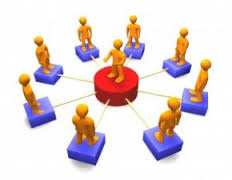
Coordinating Activities:
Coordination is the process of linking the activities of the various departments of the organization. Pooled, sequential, or reciprocal interdependence among departments is a primary reason for coordination. Managers can draw on several techniques to help achieve coordination.
Differentiating Between Positions:
A line position is a position in the direct chain of command that is responsible for the achievement of an organization’s goals. In contrast, a staff position provides expertise, advice, and support for line positions. Administrative intensity is the degree to which managerial positions are concentrated in staff positions.

Resources:
Organization - Meaning, Functions and It's Features
Organization - Meaning, Functions and It's Features
Types Of Organization
Organizations can be divided into 3 types:
Essential Features of Organization Management
Planning
Definition
Organizing is the process of establishing orderly uses of all the organization's resources within the management system. Organization, on the other hand, is a group of people working together to accomplish a goal.
Need for Organization Management
- Organization management gives a sense of security and oneness to the employees.
- An effective management is required for better coordination among various departments.
- Employees accomplish tasks within the stipulated time frame as a result of effective organization management.
- Employees stay loyal towards their job and do not treat work as a burden.
- Effective organization management leads to a peaceful and positive ambience at the workplace.
Types Of Organization
Organizations can be divided into 3 types:
- Functional
- Divisional
- Matrix
For overall functions, the Functional types has been the most prevalent form of organization being implemented today for it's major pros over other types. Some advantages of Functional Organization are:
- Suited to a stable environment
- Fosters development of expertise
- Offers colleagues for specialists
- Requires little internal coordination
- Requires fewer interpersonal skills
Committees
Committees are effective means of pooling the expertise of different members of an organization and channeling their efforts towards a common goal. Some common committees that are directly associated with the shipping industry are:
- Shipboard Management Committee (SMC)
- Shipboard Safety Committee
Planning
- Prepare an effective business plan. It is essential to decide on the future course of action to avoid confusions later on.
- Plan out how you intend to do things.
- Organizing refers to the judicious use of resources to achieve the best out of the employees.
- Prepare a monthly budget for smooth cash flow.
- Poor organization management leads to unhappy employees who eventually create problems for themselves as well as the organization.
- Recruit the right talent for the organization.
- The managers or superiors must set clear targets for the team members.
- A leader must make sure his team members work in unison towards a common objective. He is the one who decides what would be right in a particular situation.
Resources:
https://www.managementstudyguide.com/organization-management.htm
Saturday, January 19, 2019
PLANNING IN MANAGEMENT
PLANNING :
Source- Google images
In organisations, planning can become a management process, concerned with defining goals for a future direction and determining on the missions and resources to achieve those targets. To meet the goals, managers may develop plans such as a business plan or a marketing plan. Planning always has a purpose. Planning is one of the most important project management and time management techniques. Planning is preparing a sequence of action steps to achieve some specific goal. If a person does it effectively, they can reduce much the necessary time and effort of achieving the goal. A plan is like a map. When following a plan, a person can see how much they have progressed towards their project goal and how far they are from their destination.
There are three major types of planning, which include operational, tactical and strategic planning. A fourth type of planning, known as contingency planning, is an alternative course of action, which can be implemented if and when an original plan fails to produce the anticipated result.
STEPS INVOLVED IN PLANNING:
Source-Google Wikipedia
Example of Planning process:
CHARACTERISTICS OF PLANNING -
- First and foremost managerial function : Organising, staffing, directing, controlling etc..
- Goal oriented : It should focus on the goals of the organisation.
- Pervasive : It is pervasive that is it is present in all the senses of the organisation.
- Continuous process : Plans are framed, executed and followed by another plan.
- Intellectual process : It is a mental exercise as it involves the mind.
- Futuristic : In the process of planning we always have a sneak peek of the future.
LIMITATIONS OF PLANNING IN MANAGEMENT:
Source-Google planning limitations
INFLUENCING IN MANAGEMENT
 |
| google images.com |
DEFINITION
Influencing is a crucial medium that anyone should have in management. The ability to have this component can make a whole different in your perspective, It will help you how to overcome obstacles, discovers strategies and personally expand in your personal impact within your organization through engaging and dynamic activities.
 |
| google images.com |
 |
| google images.com |
- Charisma. It is the power of influence in a leader's style and personality.
- Legitimacy. Legitimate power resides in the leaders' position.
- Empowering.
People who become highly skills in this area can be extraordinarily effective at leading and influencing other people.
 |
| google images.com |
Controlling in Management
Controlling
Definition: Control is a primary goal-oriented function of management in an organisation. It is a process of comparing the actual performance with the set standards of the company to ensure that activities are performed according to the plans and if not then taking corrective action.
 |
| (source:google image) |
Features of Controlling
- An effective control system has the following features:
- It helps in achieving organizational goals.
- Facilitates optimum utilization of resources.
- It evaluates the accuracy of the standard.
- It also sets discipline and order.
- Motivates the employees and boosts employee morale.
- Ensures future planning by revising standards.
- Improves overall performance of an organization.
- It also minimises errors.
Controlling and planning are interrelated for controlling gives an important input into the next planning cycle. Controlling is a backwards-looking function which brings the management cycle back to the planning function. Planning is a forward-looking process as it deals with the forecasts about the future conditions.
 |
| (source:google image) |
Process of Controlling
Control process involves the following steps as shown in the figure:
 |
| (source:google image) |
- Establishing standards: This means setting up of the target which needs to be achieved to meet organisational goals eventually. Standards indicate the criteria of performance.Control standards are categorized as quantitative and qualitative standards. Quantitative standards are expressed in terms of money. Qualitative standards, on the other hand, includes intangible items.
- Measurement of actual performance: The actual performance of the employee is measured against the target. With the increasing levels of management, the measurement of performance becomes difficult.
- Comparison of actual performance with the standard: This compares the degree of difference between the actual performance and the standard.
- Taking corrective actions: It is initiated by the manager who corrects any defects in actual performance.
Controlling process thus regulates companies’ activities so that actual performance conforms to the standard plan. An effective control system enables managers to avoid circumstances which cause the company’s loss.
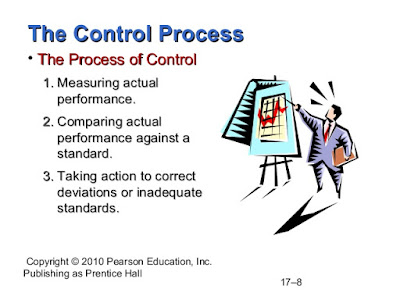 |
| (source:google image) |
Types of control
There are three types of control viz.,
- Feedforward Control: This process involves collecting information about a finished task, assessing that information and improvising the same type of tasks in the future.
- Concurrent control: It is also called real-time control. It checks any problem and examines it to take action before any loss is incurred. Example: control chart.
- Feedback control: This type of control helps to foresee problem ahead of occurrence. Therefore action can be taken before such a circumstance arises.
In an ever-changing and complex environment, controlling forms an integral part of the organization.
 |
| (source:google image) |
Advantages of controlling
- Saves time and energy
- Allows managers to concentrate on important tasks. This allows better utilization of the managerial resource.
- Helps in timely corrective action to be taken by the manager.
- Managers can delegate tasks so routinely chores can be completed by subordinates.
On the contrary, controlling suffers from the constraint that the organization has no control over external factors. It can turn out to be a costly affair, especially for small companies.
 |
| (source:google image) |
CONTROLLING
 |
| Source :http://www.gotabout.info/importance-controlling-business/ |
-“Managerial control implies the measurement of accomplishment against the standard and the correction of deviations to assure attainment of objectives according to plans”. Koontz And O’Donnell
-“Control is the process of bringing about conformity of performance with planned action.” Dale Henning
Importance :
-Accomplishing organisational goals
(Finding out deviations and taking corrective measures)
 |
| Source:https://accountlearning.com/control-in-management-characteristics-prerequisites-steps-in-controlling/ |
(Helps in reviewing and revising the standards according to the changes in environment)
 |
| Source : http://www.yourarticlelibrary.com/organization/the-importance-and-limitations-of-controlling-organization-management/8738 |
(Checks the working of employees at each and every stage of operations.Hence results in minimum wastage or spoilage of resources.)
-Improving employee motivation
(Evaluation of performance and consequent rewards in the form of increment, bonus, promotion making the employees to put their best efforts.)
-Ensuring order and discipline
(Close check on the activities of the employees helps in reducing the dishonest behaviour of the employees.)
-Facilitating coordination in action
(Providing a common direction to the all the activities of different departments and efforts of individuals.)
 |
| Source : http://www.yourarticlelibrary.com/management/controlling-process-notes-on-controlling-process-organization-management/8730 |
Limitations :
-Difficulty in setting qualitative standards
(Very difficult to compare the actual performance with the predetermined standards, if these standards are not expressed in quantitative terms such as job satifaction and employee behaviour.)
-No control on external factors
(An organization fails to have control on external factors like technological changes, competition, government policies, changes in taste of consumers etc.)
-Resistance from employees
(They consider the control systems as curbs on their freedom. For example, surveillance through closed circuit television (CCTV).)
-Costly affair
(Involves a lot of expenditure, time and effort, thus it is a costly affair.The cost must not exceed the benefits expected.)
Source : http://www.businessmanagementideas.com/advertisement/controlling-its-definition-importance-and-limitations-management-functions/2399
Management Process : Organizing
Hello guys, in this entry I will share about organizing in managemet system. Organizing is very important in management system. The other management process cannot be functional if organizing not proper made by company or organization.
Definition
Organizing is a systematic process of structuring, integrating, co-ordinating task goals, and activities to resources in order to attain objectives.

saverioconsulting.com
Characteristics
1. Specialization and Division of Work
The division of work is assigning responsibility for each organizational component to a specific individual group thereof. It become specialization when the responsibility for a specific task lies with a designated expert in that field.This is to make the process function correctly.
2. Composition of Individuals and Groups
Individuals form a group and the groups form an organization. Thus, organization is the composition of individual and groups. Individuals are grouped into departments and their work is coordinated and directed towards organizational goals.
3. Continuity
Organization is a group of people with work together to achieve organizational goals. The relationship not come to the end if the task complete. Organization is never ending process.
4. Flexibility
This process should be flexible so that any changes can be incorporated easily. It ensures the ability to adapt and adjust the activities in response to change taking place in the external environment.

roberthalf.com
Purpose
1. Organizing helps to achieve organizational goal.
2. To make optimum use of resource such as men, material, money, machine and method. It is necessary to design an organization properly. Work should be divided and right people should be given right job so that to reduce wastage of recources.
3. To facilitates growth and diversification. Organizing is good to improvise the organization progress. The good structure will determine the good product. It also product creativity in managers.
4. To perform managerial function. Without proper organizing, the other process of management cannot be implement.

enterpreneur.com
Importance of Organizing
1. Organizations are often troubled by how to organize, particularly when a new strategy is developed.
2. Changing market conditions or new technology requires change.
3. Organizations seek efficiencies throug improvements in organizing.

technologies.ami.nl
Thats all for this entry. I hope it will help the reader to understand about organizing in management.
Definition
Organizing is a systematic process of structuring, integrating, co-ordinating task goals, and activities to resources in order to attain objectives.

saverioconsulting.com
Characteristics
1. Specialization and Division of Work
The division of work is assigning responsibility for each organizational component to a specific individual group thereof. It become specialization when the responsibility for a specific task lies with a designated expert in that field.This is to make the process function correctly.
2. Composition of Individuals and Groups
Individuals form a group and the groups form an organization. Thus, organization is the composition of individual and groups. Individuals are grouped into departments and their work is coordinated and directed towards organizational goals.
3. Continuity
Organization is a group of people with work together to achieve organizational goals. The relationship not come to the end if the task complete. Organization is never ending process.
4. Flexibility
This process should be flexible so that any changes can be incorporated easily. It ensures the ability to adapt and adjust the activities in response to change taking place in the external environment.

roberthalf.com
Purpose
1. Organizing helps to achieve organizational goal.
2. To make optimum use of resource such as men, material, money, machine and method. It is necessary to design an organization properly. Work should be divided and right people should be given right job so that to reduce wastage of recources.
3. To facilitates growth and diversification. Organizing is good to improvise the organization progress. The good structure will determine the good product. It also product creativity in managers.
4. To perform managerial function. Without proper organizing, the other process of management cannot be implement.

enterpreneur.com
Importance of Organizing
1. Organizations are often troubled by how to organize, particularly when a new strategy is developed.
2. Changing market conditions or new technology requires change.
3. Organizations seek efficiencies throug improvements in organizing.
technologies.ami.nl
Thats all for this entry. I hope it will help the reader to understand about organizing in management.
Subscribe to:
Posts (Atom)
Long Rowing
Assalamualaikum. Long Rowing This is a story of how I lead a kayaking race expedition to Bunga Mas 6. Our expedition were joined by ...
-
Hi guyss untuk kali kedua daridapa saya. Pada bulan julai 2017 dahulu , kesemua kadet ALAM telah mendaftar untuk kali pertama dah telah mel...
-
Berbincang pasal pemimpin sudah tentu nama salah seorang sahabat Nabi Muhammad tidak asing lagi.Hal ini kerana sikap kepimpinan dan keberani...
